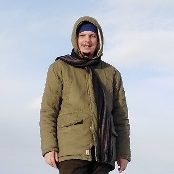Ecology and Paleoecological Research on Lake and Peat Bog Ecosystems
A special issue of Water (ISSN 2073-4441). This special issue belongs to the section "Biodiversity and Functionality of Aquatic Ecosystems".
Deadline for manuscript submissions: closed (12 June 2021) | Viewed by 9640
Special Issue Editors
Interests: My current research uses paleoecological proxies to examine lead and lag ecosystem responses to sudden climate changes during the last glacial cycle. In my work, I use ecological and paleoecological approaches to assess how extreme events affect lake and wetland ecosystems. I try to determine the resistance and threshold values of these ecosystems and how climate change, human activities, and extreme events (i.e. drought, tornado, and flood) affect such ecosystems now and in the past.
Interests: My scientific interests are in the field of Quaternary Paleoecology. Objects of study include lake deposits, peatlands and archaeological sites. Using a combination of biological and geochemical methods, my colleagues and I reconstruct the environments, biodiversity and climate of past epochs. The focus is also on the interaction between people and nature in the past.
Interests: As climate is the leading driver of ecosystem functioning in temperate regions, I follow response of biotic proxies to temperature fluctuations from the Late Glacial to the Meghalayan. Wetland communities depend on habitat heterogeneity and type of water supply, which is why I try to track ecosystem responses to mire humidity with robust statistical techniques. I am involved in multiproxy archaeological research that determines anthropogenic influence exerted on the state of freshwater ecology, as human-induced pressures have also influenced natural ecosystem drivers, especially since the Neolithic age
Special Issue Information
Dear Colleagues,
Lake and peatland hydrological cycles play a crucial role in local and regional ecosystems and are an important element of landscape evolution in the Late Quaternary. Biogenic sediment archive (peat and lake sediments) can yield high-resolution palaeoecological records which can provide a long-term perspective for current ecological change. Human-induced pressures, combined with climate changes, have significantly alternated lake and peatland ecosystems in many parts of the world. The Anthropocene is flawed due to prolonged droughts, shrinking and degradation of wetlands, lake eutrophication and intoxication, water resource shortages, and general declining of ecosystem health and biodiversity. We hope there is common agreement in the scientific community that the recently observed climate change affects hydrological, ecological, and socioeconomic regimes. An understanding of ecosystem functioning, legacy, and long-term trajectories is crucial to protect ecosystems now and in the future. We still need research on the functioning of peatlands and freshwaters in the past and their relationships with neighboring landscapes. This will become a priority in the 21st century as climate change accelerates.
The purpose of this Water Special Issue is to gather studies on the past and current effects of climate change and human activity on (a) development pathways of peatlands and lakes, (b) sensitivity and resilience of freshwater ecosystems to extreme events (droughts, fires, floods, etc.), (c) long-term paludification, (d) water intoxication and eutrophication, (e) biodiversity, and (f) the ecohydrological response. The Water journal aims to highlight the challenges of aquatic ecosystem management and restoration from the long-term perspective of natural existence recorded in palaeoarchives. Studies on freshwaters and wetlands will indicate directions for their protection in the context of current problems related to biodiversity loss and greenhouse gas emissions.
We would like this Special Issue to integrate palaeoecological and ecohydrological studies for a better understanding of freshwaters and peatlands. Finally, we are keen to display the advancement and challenges in lake and peat bog monitoring, including data management or numerical modeling. We welcome manuscripts related to ecology and paleoecology, climate reconstruction, human impact, and environmental monitoring.
Dr. Michał Słowiński
Dr. Natalia Rudaya
Dr. Mateusz Płóciennik
Guest Editors
Manuscript Submission Information
Manuscripts should be submitted online at www.mdpi.com by registering and logging in to this website. Once you are registered, click here to go to the submission form. Manuscripts can be submitted until the deadline. All submissions that pass pre-check are peer-reviewed. Accepted papers will be published continuously in the journal (as soon as accepted) and will be listed together on the special issue website. Research articles, review articles as well as short communications are invited. For planned papers, a title and short abstract (about 100 words) can be sent to the Editorial Office for announcement on this website.
Submitted manuscripts should not have been published previously, nor be under consideration for publication elsewhere (except conference proceedings papers). All manuscripts are thoroughly refereed through a single-blind peer-review process. A guide for authors and other relevant information for submission of manuscripts is available on the Instructions for Authors page. Water is an international peer-reviewed open access semimonthly journal published by MDPI.
Please visit the Instructions for Authors page before submitting a manuscript. The Article Processing Charge (APC) for publication in this open access journal is 2600 CHF (Swiss Francs). Submitted papers should be well formatted and use good English. Authors may use MDPI's English editing service prior to publication or during author revisions.
Keywords
- Reconstructions of environmental change
- Monitoring and process studies
- Paleoecology of peatland and lake ecosystems
- Human impact
- Paleoclimatology
- Hydroclimatic conditions
- Multiproxy analysis
- Development pathways
- Community ecology
- Late Quaternary
Benefits of Publishing in a Special Issue
- Ease of navigation: Grouping papers by topic helps scholars navigate broad scope journals more efficiently.
- Greater discoverability: Special Issues support the reach and impact of scientific research. Articles in Special Issues are more discoverable and cited more frequently.
- Expansion of research network: Special Issues facilitate connections among authors, fostering scientific collaborations.
- External promotion: Articles in Special Issues are often promoted through the journal's social media, increasing their visibility.
- e-Book format: Special Issues with more than 10 articles can be published as dedicated e-books, ensuring wide and rapid dissemination.
Further information on MDPI's Special Issue polices can be found here.







